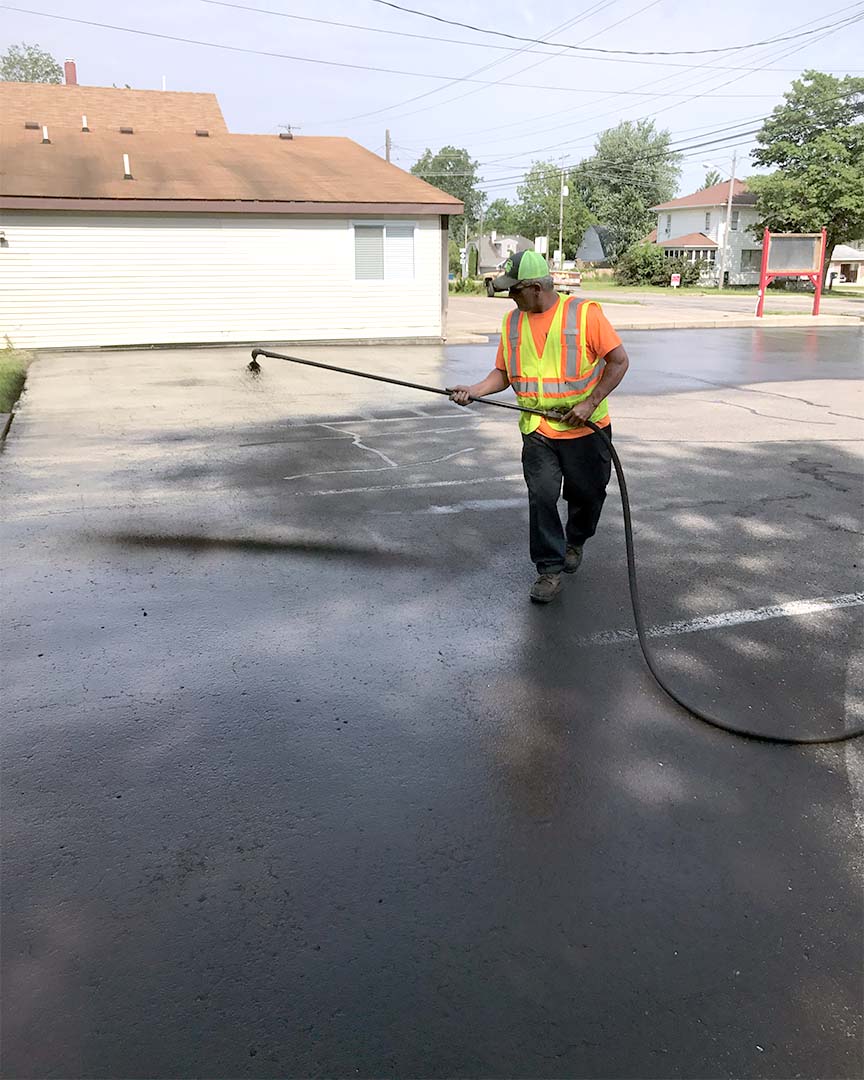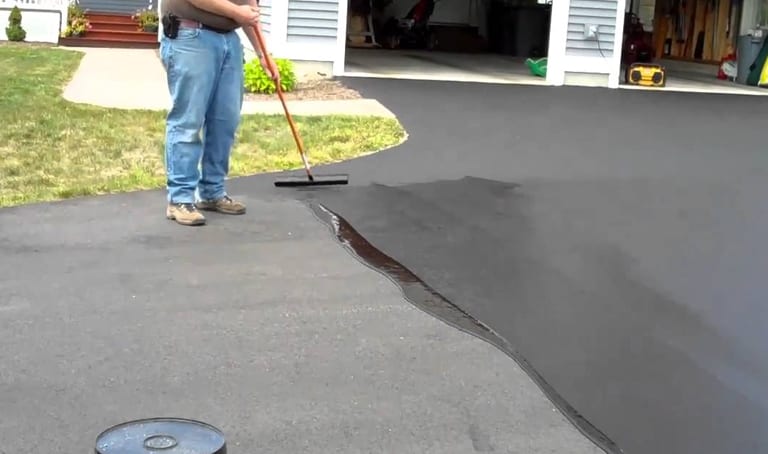Elevate Commercial Appeal: Hot Mix Asphalt Sealing for Angled Parking Lots
Elevate Commercial Appeal: Hot Mix Asphalt Sealing for Angled Parking Lots
Blog Article
Warm Mix Asphalt: A Lasting Solution for Pavement
Warm Mix Asphalt (HMA) has actually arised as a leading lasting option for pavement options, providing a myriad of ecological advantages and cutting-edge technologies. Its capacity to minimize and recycle materials energy intake presents a compelling case for its fostering in roadway building tasks. Moreover, the lasting efficiency and toughness of HMA make it a favored choice for framework advancement. As the need for environmentally friendly building and construction methods grows, discovering the subtleties of HMA's sustainability can supply useful insights right into the future of pavement remedies.
Ecological Benefits of Warm Mix Asphalt

Moreover, Hot Mix Asphalt assists to mitigate metropolitan heat island impacts. Its dark shade absorbs sunshine, minimizing the quantity of warmth reflected back right into the ambience compared to lighter-colored sidewalks. This can lower ambient temperature levels in city areas, reducing the need for cooling and eventually decreasing power consumption.
In enhancement, Hot Mix Asphalt adds to improved stormwater monitoring. Its porous nature permits water to charge and infiltrate the pavement groundwater materials, minimizing overflow and the danger of flooding. These ecological benefits make Warm Mix Asphalt a lasting option for paving highways and roads.
Energy Performance in HMA Production
Is power effectiveness a crucial element in the manufacturing of Hot Mix Asphalt (HMA)? Energy plays a substantial function in the manufacturing of HMA, affecting both expense and environmental sustainability. One vital element of energy efficiency in HMA manufacturing is the use of cozy mix asphalt (WMA) innovations.
In addition, developments in plant modern technologies have led to more energy-efficient HMA manufacturing processes. By enhancing power use in HMA production, the market can minimize its carbon footprint while preserving high-quality pavement materials.
Recyclability of Warm Mix Asphalt
The recyclability of Warm Mix Asphalt (HMA) is a critical facet of its sustainability and long-term environmental effect. HMA is among the most recycled products in the USA, with over 100 million lots of redeemed asphalt sidewalk (RAP) being recycled yearly in brand-new sidewalk building and construction. Reusing HMA offers several ecological advantages, such as decreasing the need for virgin materials, reducing energy intake throughout manufacturing, and lowering the quantity of waste sent out to landfills.
The process of recycling HMA includes milling the existing pavement, crushing it into smaller pieces, and mixing it with new aggregate and asphalt a fantastic read binder to create a recycled mix. This recycled mix can commonly execute in addition to or perhaps much better than conventional HMA, while needing less raw products and creating lower greenhouse gas discharges. By incorporating RAP into new pavement tasks, roadway agencies can preserve all-natural sources, minimize expenses, and reduce the ecological footprint of road construction and upkeep tasks. On the whole, the recyclability of HMA plays a significant duty in advertising sustainable practices within the sidewalk sector.

Long-Term Performance of HMA
Asphalt pavements show sturdiness and strength over a prolonged duration, showing the long-term performance of Warm Mix Asphalt (HMA) Additionally, improvements in HMA technology, such as the use of polymer-modified binders and cozy mix asphalt, have additionally boosted the sturdiness and long life of HMA sidewalks. By prioritizing top quality construction and upkeep techniques, HMA continues to verify itself as a affordable and sustainable remedy for long-lasting pavement framework.

HMA: Sturdiness and Sustainability
Demonstrating both resilience and sustainability, Warm Mix Asphalt (HMA) has ended up being a foundation in the building of lasting pavement frameworks - regrading. HMA's longevity comes from its ability to hold up against hefty loads, extreme weather conditions, and high website traffic volumes, making it a reliable option for roadways, highways, and airport terminal runways. The make-up of HMA, which usually consists of aggregates, binder, and filler, plays a vital role in improving its long life and resistance to wear and tear
Moreover, HMA's sustainability lies in its recyclability and energy-efficient manufacturing procedure. The ability to reuse redeemed asphalt pavement (RAP) in new HMA blends lowers the demand for virgin materials and reduces the ecological influence of pavement construction and maintenance. Furthermore, the power performance of generating HMA depends on its lower mixing temperature levels contrasted to various other sidewalk products, bring about why not try here reduced energy consumption and greenhouse gas discharges.
Final Thought
In final thought, hot mix asphalt (HMA) offers a lasting option for pavement with its eco pleasant attributes. HMA's recyclability, energy efficiency in manufacturing, and long-term resilience make it an eco-friendly choice for roadway building.
HMA is one of the most recycled products in the United States, with over 100 million lots of reclaimed asphalt pavement (RAP) being recycled yearly in brand-new pavement building and construction.The process of recycling HMA entails grating the existing sidewalk, crushing it right into our website smaller items, and mixing it with brand-new aggregate and asphalt binder to develop a recycled mix.Asphalt pavements show sturdiness and resilience over a prolonged duration, showing the long-term performance of Warm Mix Asphalt (HMA) Additionally, innovations in HMA innovation, such as the usage of polymer-modified binders and warm mix asphalt, have further enhanced the toughness and longevity of HMA pavements. The capacity to reuse reclaimed asphalt pavement (RAP) in brand-new HMA mixes lowers the need for virgin materials and reduces the environmental influence of pavement construction and upkeep.
Report this page